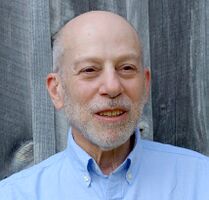Birnbaum, R.
| English Phonetics | Raoul Birnbaum |
|---|---|
| Sort Name | Birnbaum, Raoul |
Tibetan calendar dates
| Website: | Faculty Page |
|---|
- Primary Affiliation (Workplace)
- University of California, Santa Cruz
PhD University
- Columbia University
Education
- Ph.D., Religion, Columbia University
- M.Phil., Religion, Columbia University
- M.A., Art History and Archaeology, Columbia University
- B.A. (Honors), Asian Studies, The City College, City University of New York
Biographical Information
Raoul Birnbaum works in the interdisciplinary field of Buddhist studies, with special focus on China. Trained in visual studies, history of religions, and ethnography, his research is rooted in historical approaches. These studies have concentrated on three great themes in the history of Chinese Buddhist life: the major deity cults, visions of the landscape intertwined with religion, and close examination of dimensions of the lives of individuals within this religious field. Following an earlier focus on medieval times in China, in recent decades he has concentrated on significant figures of the late 19th and early 20th centuries, as well as the 17th-century figures and phenomena to which they often turned as the models and sources for their practical and conceptual foundations.
The largest on-going project focuses on the artist-monk Hongyi 弘一大師 (1880-1942), a remarkably complex, inventive, and influential figure in Chinese Buddhist worlds. A project on one of his contemporaries, the prominent lay Buddhist Gao Henian 高鶴年 (1872–1962), is on the horizon. And in a comparative vein as a project parallel to the Hongyi studies, he has been investigating the many worlds of St. Francis, with field research in that medieval saint's Umbrian homeland.
Birnbaum's work has been strongly influenced by intensive field study over several decades within Chinese Buddhist monastic communities and across a wide variety of the mountain sites that form the backbone of this tradition’s conceptual geography. (Source Accessed Aug 9, 2021)
- Wiki Pages
